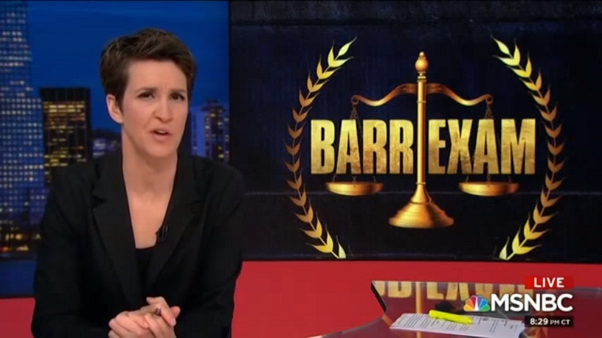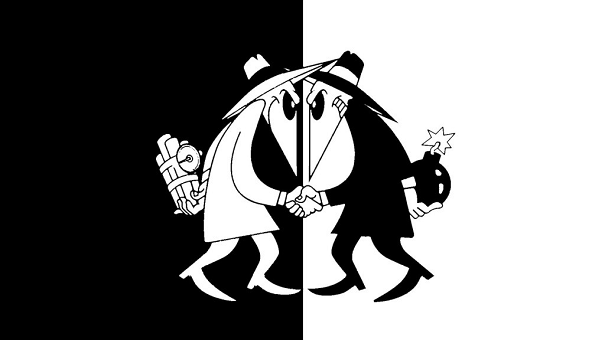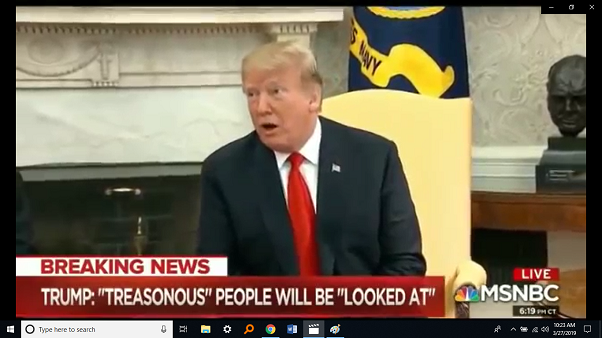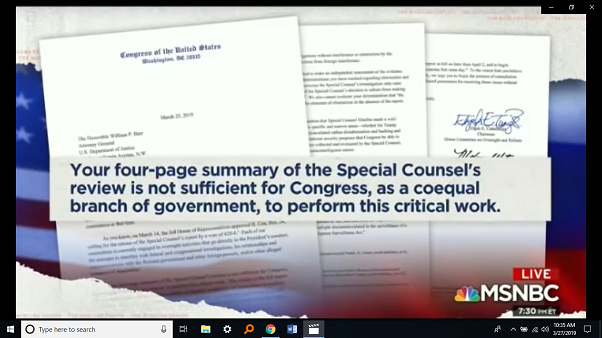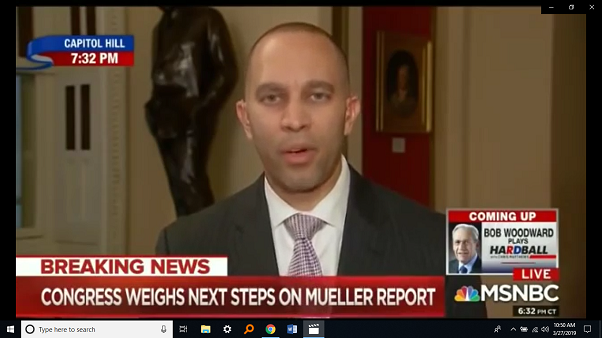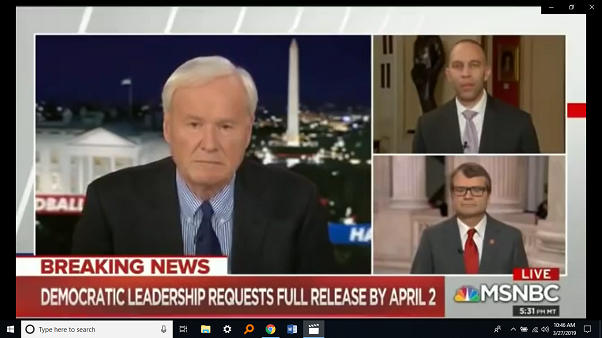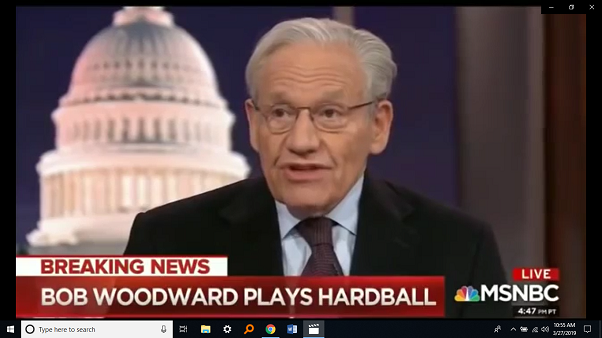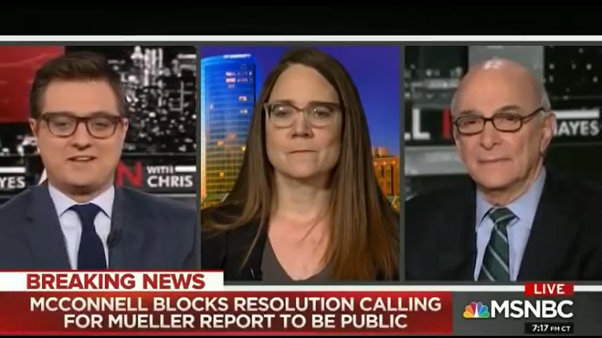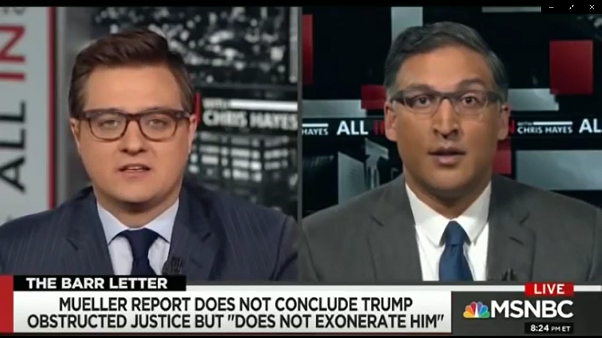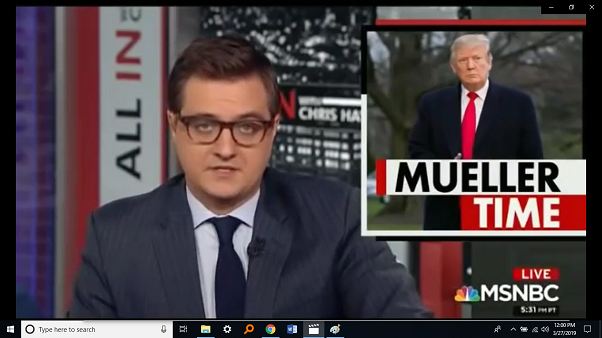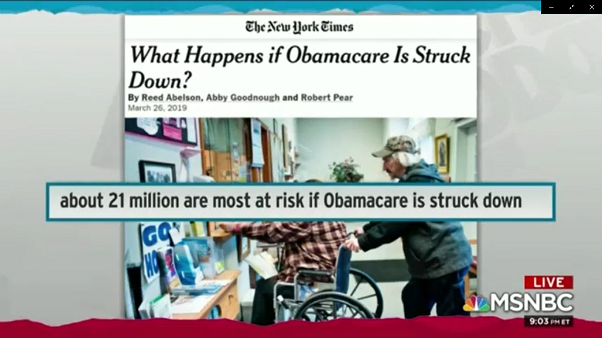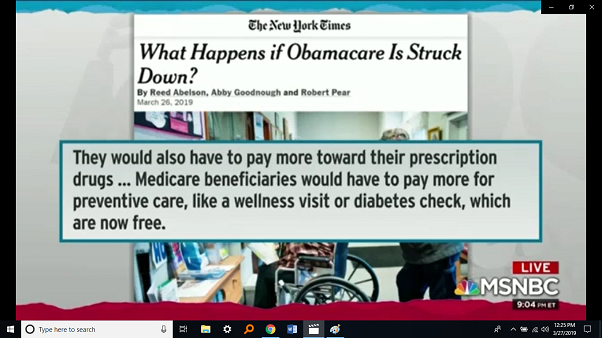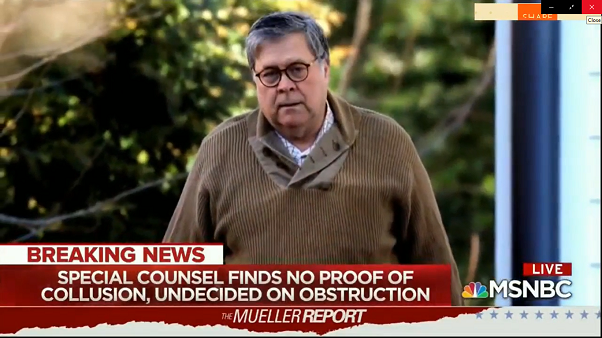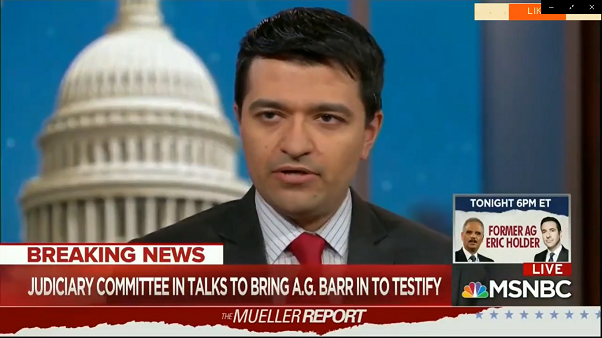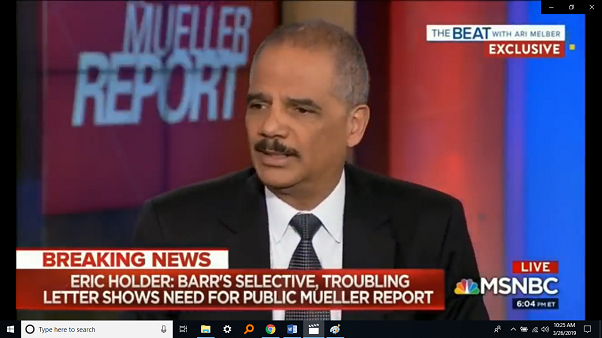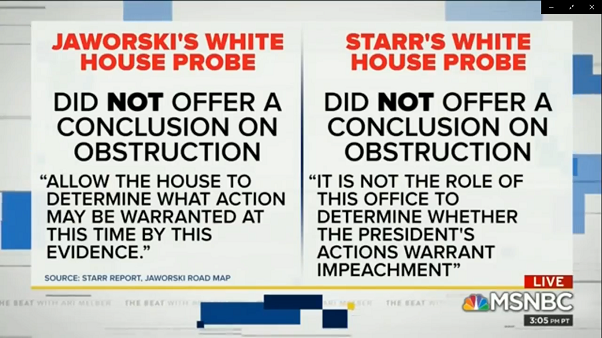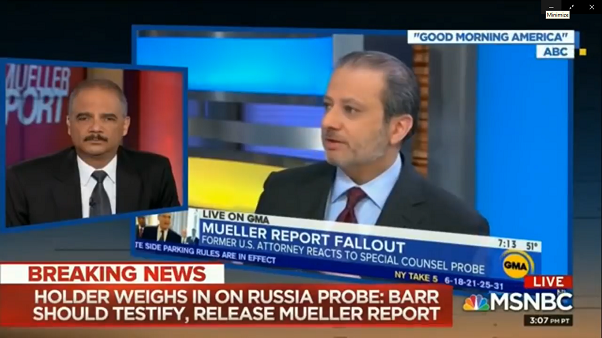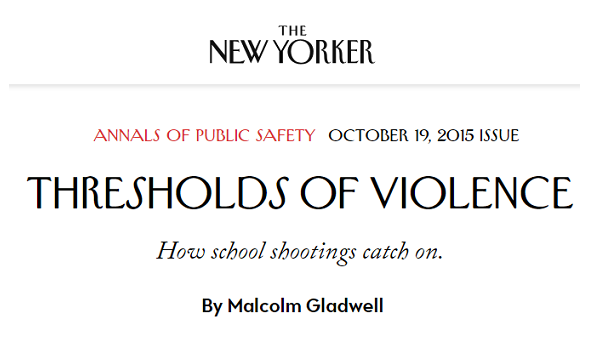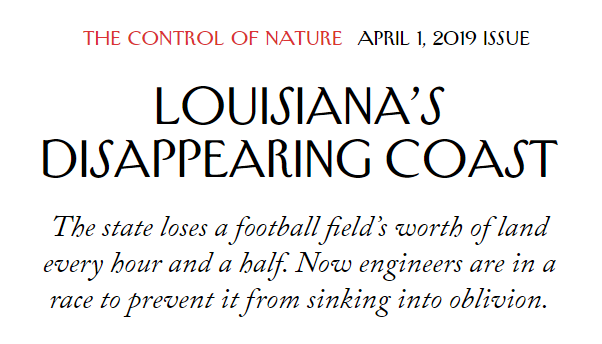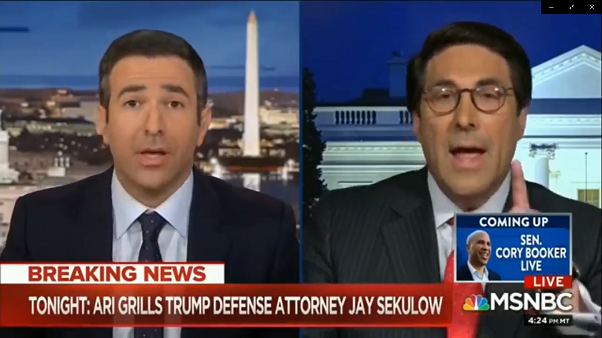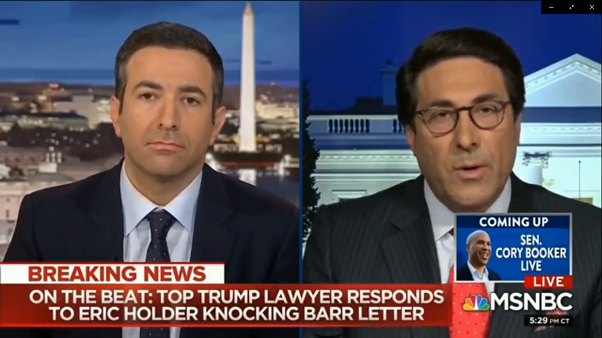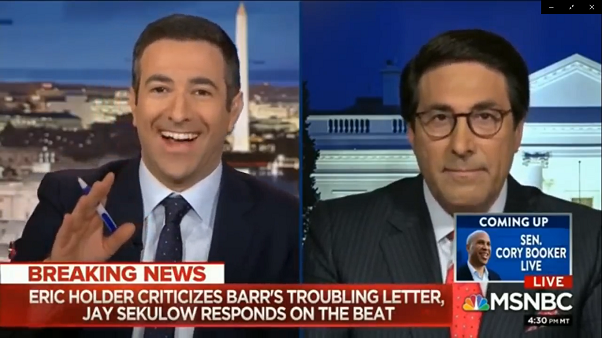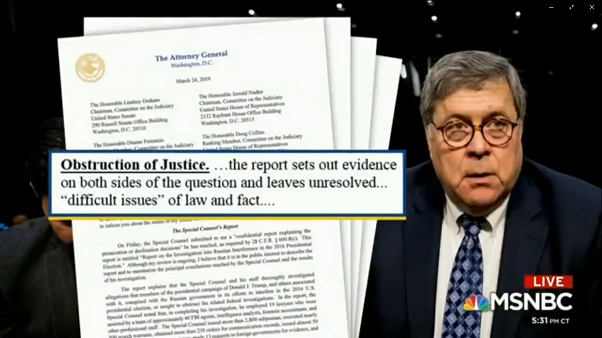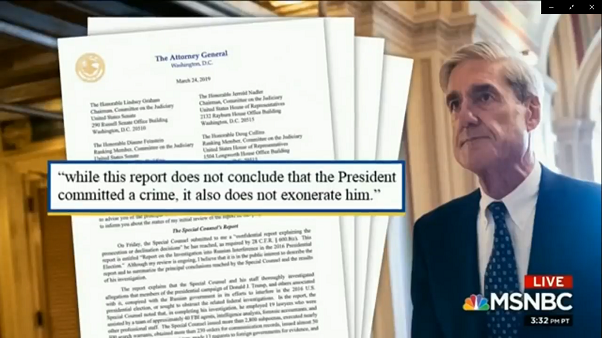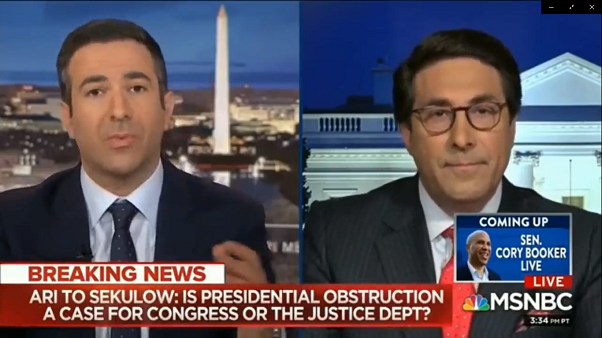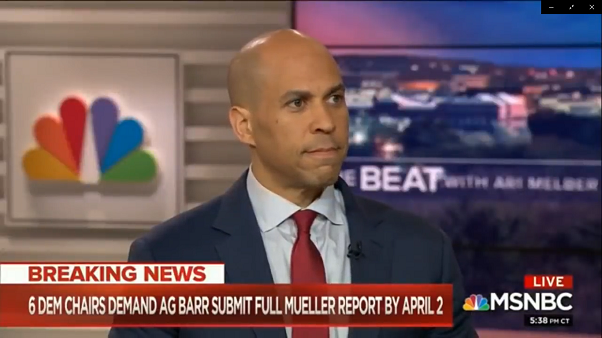[ by Charles Cameron — I’ll leave it to my friend Hadar Aviram to lay out her distillation of the report, starting with Volume I ]
.
One of the best uses of Twitter is to provide continuous threads by a single author on a topic of interest.
Hadar Aviram, who teaches law at UC Hastings, wrote up a detailed rundown of the Mueller report yesterday evening, and released it in the form of two Twitter-threads, one for each volume. With her gracious permission, I’m reposting them here on ZP.
Hadar points out that her threads mostly recount the contents of the two volumes, with only one or two of her own comments. Volume I deals with Russia’s election interference and its interactions with the Trump campaign.
**
Volume 1:
1. #MuellerReport Volume 1, redux: We now know, beyond a shadow of a doubt, that the Russian government procured the outcome of the 2016 U.S. Election, in order to obtain a presidency that was hospitable to their aspirations in the Ukraine.
2. They did so in two ways: deep and sophisticated infiltration of social media since 2014, and hacking the DNCC emails.
3. The Russian hackers impersonated not only right-wing groups, but also progressive groups.
4. Many rallies throughout the US, purportedly organized by “grassroots activists”, were organized by Russians.
5. Among these dozens of rallies, the ones that stand out in particular were the ones supposedly organized by the coal industry.
6. Russian operatives organized self-defense classes for African Americans to fight police, posing as a black rights org called “black fist.”
7. The Trump campaign, including Trump himself, endorsed Russian political operative by retweeting their tweets and cooperating with their rallies. Unclear whether they knew they were interacting with Russians.
8. The Russian military hacked Democrat accounts in several waves, in a concerted and sophisticated effort.
9. This involved planting malware on the servers, as well as the theft of thousands of documents.
10. The GRU disseminated the stolen documents first through two anonymized accounts, DCLeaks and Guccifer, and then through WikiLeaks.
11. The Guccifer account reached out directly to the Trump Campaign offering more information, but no evidence of further communication with the campaign.
12. WikiLeaks were not neutral parties, and their collaboration was fostered by partisanship. Assange explicitly said to WikiLeaks employees that “it would be better for the GOP to win.”
13. The GRU and Wikileaks hid their communications, so the #MuellerReport has only partial information about the transfer, but they did establish when some of the documents were transferred.
14. The day that Trump publicly said, “Russia, if you’re listening, I hope you can find the 30,000 emails” on Clinton’s server, the GRU hacked Clinton’s account.
15. The GRU also directly intervened in the election by targeting election administrators and hacking computer systems, specifically in Illinois and Florida. B/c of redactions, unclear from this version which of these interventions were successful.
16. The part about the Trump Campaign’s interest in the hacking activities is heavily redacted. Some of the redactions involve incidents mentioned by Cohen and Manafort and involving Trump personally, but too much redacted material to get a full picture.
17. Page 54: It seems like Trump and Gates were going to the airport, Trump got a call and then told Gates that more emails were forthcoming.
18. Correspondence between Trump Jr. and Wikileaks shows that they were in communication and that Trump Jr. shared their leaked emails, but falls short of showing Jr. actively asking them to do things.
19. There is evidence of several Trump campaign officials making efforts to recover Clinton’s discarded emails, most of them without success and some pursued “to some degree.”
20. Two of these people, Barbara Ladeen and Peter Smith, were contacted by Michael Flynn and asked to dig for the emails, and Smith even formed a corporation aimed at doing so.
21. Connections btwn Trump campaign & Russians before Nov. 8, 2016: [1] Trump Tower Moscow project negotiations btwn Trump and oligarchs (Crocus Group) begin after Miss Universe pageant in Russia. Last communication on this appears to be Nov. 24, 2014.
22. In 2015, Moscow tower convo is revived with communication between new investment group, and Michael Cohen, through Felix Sater. Throughout 2015 and 2016 Cohen reported to Trump about the progress of the project.
23. Btwn Oct 2015 and Jan 2016, Trump negotiated directly with the Russian Government and the City of Moscow re the tower, personally signing a “letter of intent.” In this context, Sater emails Cohen, telling him that Putin has the power to make Trump POTUS.
24. Cohen does not remember Trump explicitly discussing the impact of business on his presidency, but remembers Trump saying that the presidency will result in good business.
25. After signing the letter of intent, Klokov, an energy corporation exec, contacted Ivanka offering help with the campaign. She forwarded his email to Cohen, who corresponded with Klokov, the latter suggesting a course of action ending in a Trump-Putin meeting.
26. Klokov suggested that the Trump-Putin meeting be informal and divorced from the political issue.
27. Cohen continued pressing through the Sater channel, but his email asking for a meeting didn’t go through b/c he misspelled the recipient’s email address.
28. Cohen later resent to the correct address. He lied to congress that he didn’t get a response. In fact, he had received a response, and was still working on arranging the meeting and reporting to Trump well into June 2016.
29. Sater continued to make attempts to bring Cohen and Trump to Moscow to negotiate the tower well into mid-2016. In one correspondence item, Cohen specifically said Trump will travel after he becomes the nominee.
30. Trump himself was invited twice to Russia, once through Ivanka’s fashion connections, and ended up not going for various reasons involving the timing of the campaign and the identity of the people who invited him.
31. Moving on to outreach to foreign policy advisor George Papadopoulos. He was contacted in April 2016 by British professor Mifsud, who told him that the Russian government has procured “dirt” on Clinton.
32. Papadopoulos shared this information outside the campaign, but there is no conclusive evidence that he shared it with a campaign official, and the meeting he tried to broker never came to pass.
33. Papapdopoulos was recruited to the Trump campaign partly because of his Russia acumen, and he understood Russia was going to be “an important aspect of the campaign’s foreign policy.”
34. In March 31, 2016, Papadopoulos attended a meeting with Sessions and Trump (see pic), in which he informed them of Putin’s interest in meeting Trump. Trump and Sessions expressed interest.

35. It was only after this meeting that Papadopoulos learned from Mifsud that Russia has dirt on Clinton.
36. Manafort, who heard of this from Papadopoulos, worried about Trump involvement, and emailed another campaign official that “we need someone to communicate that [Trump] is not making these trips. It should be someone low level in the campaign so as to not send any signal.”
37. Handwritten notes from Papadopoulos confirm all this, including the need for there to be “no official letter/no message from Trump.” (p. 92.)
38. Steven Miller, Clovis, and other campaign officials deny having heard from Papadopoulos about “dirt” on Clinton.
39. Moving on to Carter Page, who joined the Trump Campaign as foreign policy advisor in March 2016, after having lived and worked in Russia and been approached by Russian intelligence years before the campaign.
40. Page’s interaction with Russian Intelligence were exposed in indictments of Russian nationals for espionage. In their communications, Page was referred to as “Male-1.”Page admitted providing them “immaterial non-public information.”
41. Page worked with the campaign from Jan 2016 in an informal capacity, and wrote to senior campaign officials at the time that “Trump could have a ‘game-changing effect. . . in bringing the end of the New Cold War.'”
42. In July 2016, Page traveled to Moscow to give a speech at the New Economic School (NES). He tried to get Trump to do it in his place, but the campaign said that was not possible and that he’d have to take the trip “out side [sic] of your role” in the campaign.
43. At NES, Page spoke openly against U.S. sanctions against Russia and met businessmen and officials, leading him to email the campaign promising “a readout soon regarding some incredible insights and outreach I’ve received” from Russian politicians.
44. Some of Page’s activities in Russia, which might explain this communication, are redacted in the copy I have, and the redacted copy only says that “Page’s activities in Russia. . . were not fully explained.”
45. The negative press about Page’s trip and his subsequent meeting with Kislyak (Russian ambassador to the U.S.) led to his removal from the campaign in September 2016.
46. Moving on to the think-tank CNS (Center for the National Interest) and its presidency Dimitry Simes (USSR born and well connected to Russian politicians and businesspeople.) In March 2016, Simes met Jared Kushner, suggesting an advisory expert group. Kushner was receptive.
47. In April 2016, CNS and Kushner discussed a Trump policy speech. The venue was moved, at Kushner’s request, to the Mayflower hotel. Trump was introduced to congress members in attendance. Kislyak was in attendance and said to Kushner, “we like what your candidate is saying.”
48. There is no evidence that Kislyak spoke directly to Trump – looks like Trump left the venue to the airport shortly after his speech.
49. Sessions was to be seated next to Kislyak, but no photographic evidence that he spoke to him at the event.
50. Kushner and Simes remained in contact until the election, with the latter advising Kushner against the “bad optics” of Russia connections and too much focus on Russia.
51. In August 2016, Kushner provided Simes, at the latter’s request, with material on Bill Clinton’s contact with Russia. Kushner thought they were “old news” and thus worthless, but Simes shared them with the think tank.
52. Moving on to Trump Tower mtg. on June 9, 2016, btwn Trump Jr. and Robert Goldsone, on behalf of Russian real-estate scion Agalarov. Trump Jr was promised material that “would incriminate Hillary and her dealings with Russia” and replied “if it’s what you say I love it.”
53. At the mtg, Russian atty Natalia Veselnitskaya said that Clinton received funds derived from illegal activities in Russia. Trump Jr. asked her to authenticate. She reportedly did not do so, instead critiquing Russian sanctions (the Magnitsky Act.)
54. Kushner and Manafort were aware of the meeting and its importance. Cohen recalls Trump being told, though he does not recall he was told specifically it was with Russians.
55. Trump, Kushner, and Manafort all deny that Trump was informed of the meeting.
56. We know, however, that when Veselnitskaya did not substantiate the Clinton info and the conversation turned to the Magnitsky Act, Kushner sent a text to Manafort, saying “waste of time,” and excused himself before the meeting ended.
57. Following the meeting, there were two unsuccessful follow-up efforts from the Russian side. The American side, however, became increasingly worried re the optics of Trump Jr.’s attendance. Goldstone told Alagarov that he “kept you and your father out of it” as a “favor”.
58. There is evidence on both sides of an effort to match versions about what happened at the meeting and make it seem innocuous on Trump Jr.’s part.
59. Moving on to RNC convention in July 2016. Sessions met Kislyak and seems to have answered a question from him during his speech. Other communications btwn them, according to Sessions, were limited to exchanging pleasantries and to “some things about U.S.-Russia relations.”
60. At behest of Trump’s foreign policy advisors, the RNC platform, which originally supported “lethal assistance” to the Ukraine, was modified to “appropriate assistance.” Senator Gordon, who also talked with Kislyak at the convention, was instrumental in procuring this change.
61. After the convention, Kislyak continued contacting Sessions and Gordon, meeting the former in September. Sessions recalls Kislyak relaying his govt.’s receptiveness to Trump’s campaign overtures. At the advice of Sandy Luff, Sessions declined further meetings.
62. Moving on to Manafort, who worked on Trump Campaign from March to August 2016. Manafort was well connected to Russian oligarchs from his previous work (see his indictment & convictions for tax fraud and money laundering) and cultivated his contacts well into the campaign.
63. Manafort employee Konstantin Kilimnik, with deep ties to Russian intelligence, contacted Manafort about a proposed peace agreement that would enable Russia to control Eastern Ukraine. The agreement would require U.S. support to succeed.
64. Manafort and Kilimnik corresponded about this peace plan well into Spring 2018. He hid and encrypted these communications and lied to Mueller and the Grand Jury about them (thus violating his plea agreement.)
65. Throughout the campaign, Manafort shared polls etc. with Kilimnik, which he perceived, per his convos with partner Rick Gates, as “good for business.”
66. Here, the report delves into Manafort’s deep Ukraine connections dating back to 2005, which explain his familiarity with Kilimnik and other Russians, and which are public knowledge b/c of Manafort’s indictment.
67. Manafort was recruited for the Trump campaign because of his deep connections with Russia, and for a while he worked for the campaign without pay. Rick Gates suspected Kilimnik of being a “Russian spy”, a view he shared with Manafort.
68. Manafort shared his campaign appointment with his Russian allies through Kilimnik, mentioning to Gates that this was “good for business” and would increase the likelihood that he would be paid $2m that he was owed for his campaign consulting work in Ukraine.
69. Manafort consistently shared, directly or through Gates, information and polling with his Russian contacts. This advanced his own business interests that go way beyond the issue of this campaign and have to do with his pre-campaign business dealings and financial situation.
70. Which brings me to a personal insight: The more I read this, the more I realize that the stuff you guys and I care about–civil rights vanishing, children in cages, planet protections evaporating, all the stuff we hold near and dear–this is just a SIDESHOW here.
71. This is not about the business dealings advancing a political appointment. This is about the political appointment advancing THE BUSINESS DEALS. Manafort is not a step toward Trump. He and his interests are the LYNCHPIN of this story. We’ve all been looking at this wrong.
72. Okay, back to the report. Manafort met Kilimnik twice during the campaign, and on both occasions the issue of the Trump campaign is mentioned as a sideshow to the business dealings and to the campaigns in the Ukraine.
73. Kilimnik cites Yanukovych (the ousted Ukrainian president) as an interested party. This illuminates Manafort’s briefings to Kilimnik not as focused on the U.S., but as using the U.S. election as a platform for the real issue, which is the proposed pro-Russian peace agreement.
74. Indeed, and this part is heavily redacted, but it seems that Manafort’s post-campaign activities relied on capitalizing on the results of the U.S. election to bring about the Yanukovych peace plan.
75. There is no conclusive evidence that Manafort brought the peace plan to the Trump campaign’s attention. Kilimnik, however, continued pressuring the Dept. of State about this well into 2018.
76. Shifting gears to contacts after the campaign. The day after the election, Hope Hicks is purportedly contacted by Putin. A few days later, Trump and Putin speak by phone, and Russian officials begin aggressively seeking inroads into the Trump administration.
77. Petr Aven, self-identified Russian oligarch, testified before Mueller team that there was a flurry of Russian activity and effort to get in touch with the Trump campaign, including outreach to transition team and to businesspeople connected with Trump.
78. This is consisted with a plan for U.S.-Russia reconciliation drafted by Kyrill Dmitriev, who heads Russia’s sovereign wealth fund, which Dmitriev argues was cleared through Putin.
79. The report section detailing Dmitriev’s aggressive efforts to insinuate himself into the Trump administration and advance the plan is heavily redacted.
80. Among other people, Dmitriev met in the Seychells with Erik Prince, who had financed the effort to find Clinton’s emails. Prince later conferred with Steve Bannon about this meeting, trying to introduce Bannon to Dmitriev and advance the plan.
81. The content of the Prince-Bannon communications cannot be verified because Bannon deleted them from his Blackberry.
82. In January 2017, Dmitriev met with Kushner’s friend Rick Gerson, and they developed a five-point memo on U.S.-Russia reconciliation. Point (3) is “developing ‘win-win’ economic and investment initiatives.” Gerson provided Kushner w/the document.
83. Subsequently, Dmitriev said the Trump-Putin phone convo “went well” and the document he had prepared “played an important role.” But communications btwn him and Gerson ceased as their investment plan went nowhere.
84. Kislyak also sought to meet Kushner after the election. Kushner was informed that in non-substantial matters, Kislyak was the person to talk to, and subsequently met him with Flynn at Trump Tower on Nov. 30, 2016. Kushner expressed U.S. desire to start afresh with Russia.
85. In December, Kushner met with Sergey Gorkov, manager of Russia’s government bank. Kushner described the meeting as diplomatic; the bank, as a business matter involving Kushner’s corporation.
86. Oligarch Petr Aven also reached out to the transition team through Simes, trying to procure a meeting with Kushner, but was told that given the media interest “on the question of cyber-hacking (and who ordered what), Project A was too explosive to discuss.”
87. Carter Page, who was no longer part of Trump’s circle, presented himself as such in Russia after the election, and met Deputy Prime Minister Arkady Dvorkovich, who expressed interest in a dialogue with the U.S. There’s more on this, but it’s redacted.
88. We shift gears to dealings through Flynn. While Obama was still president in Dec, Flynn reached out to Russian officials to procure a negative vote on U.N. resolution against Israeli settlements (which was aligned with Obama-era policies but not with Trump’s position.)
89. When Obama introduced the sanctions against Russia, Kislyak approached Flynn. Flynn first spoke with the transition team at Mar-a-Lago, and then with Kislyak, asking the latter not to escalate in response to the sanctions.
90. The next day, Russian foreign minister announced that Russia would not retaliate. Trump congratulated Putin on twitter for this decision. Kislyak told Flynn that their conversation led to this decision.
91. This concludes the facts before the cover-up. Now there’s a heavily redacted section explaining the choices in prosecuting Russian nationals about their role in the campaign (bots and hacking).
92. Now, to the Trump Campaign’s responsibility. The report analyzes this through the lens of conspiracy, which requires an agreement between two or more persons to violate criminal law. It finds that the multiple contacts in the report did not rise to that level.
93. The evidence also falls short of showing that any of these individuals was a “foreign agent” = an “individual” who “agrees to operate” in the U.S. “subject to the direction or control of a foreign government or official.”
94. Notable exceptions were Manafort and Gates, for whom there was ample evidence of acting as foreign agents.
95. As to campaign finance violations, insufficient evidence re Trump tower mtg, because: [1] insufficient proof that the campaign officials acted “willfully” (knowing the negativity of their actions) and [2] the value of the damning Clinton information is difficult to gauge.
96. There’s a redacted portion about possible First Amendment barriers to prosecution. I don’t understand why this is redacted.
97. Several people lied to the campaign about their meetings with Russians, notably Papadopoulos, Flynn, Cohen, and two redacted individuals. Regarding Sessions’ lies, the investigation did not find him “willfully untruthful” when omitting his meetings with Kislyak.
98. This thread covered Volume 1 of the report. I will now grab a quick bite before moving on to Volume 2 in a separate thread. Thank you for your attention – please retweet and share with anyone interested.
Here’s the thread for Volume 2, for those of you following here:




